Levittown PA Foundation & Waterproofing Pros

Welcome
The foundation of your home needs to be maintained on a regular basis. When you notice a crack on a wall, floor or ceiling of your home, or doors won't shut anymore. These are all signs you may want to click to call 610-890-7598 NOW! With Levittown Foundation Repair Pros, you can be sure that we will get the job done right away for you. We pride ourselves in doing everything we can to resolve your issue without you having to break the bank. Your team of contractors are experienced and highly skilled when it comes to home repair, so you can be sure that we will give you the best service and at the best prices.
About Us
We ensure to always give our customers the most effective, reliable, and cost effective solutions when it comes to foundation repair. We are committed to giving our customers the best service, which is why we have a wide range of services that are fine tuned to fit all of your home repair needs. Our team is qualified to handle any issue no matter how big or how small it may be.

Contact Us
We will get back to you as soon as possible.
Please try again later.
Foundation Repair Levittown, PA
Our Services
In the world of foundation repair, we are the best in the Levittown, PA area. If you are looking for a team that you can trust with this kind of work, then we are the best choice for you. We not only specialize in foundation repair, but we also provide our customers with sump pump installation, French drain installation, basement repair, basement remodeling, mold removal, and many others.
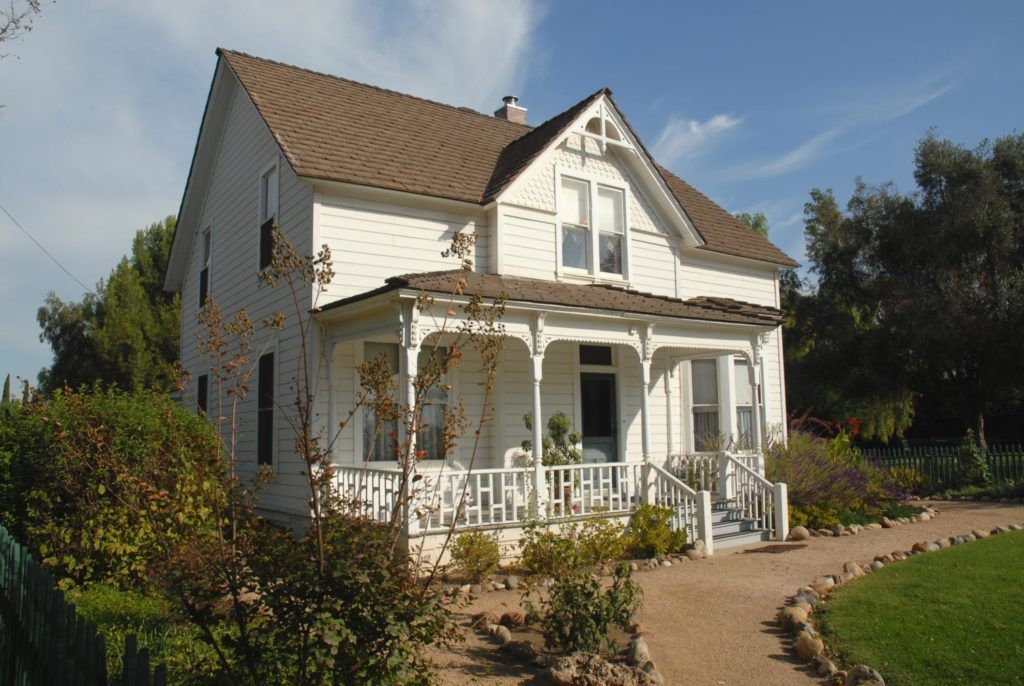
Foundation piers are used for a variety of reasons. For instance, if your home is not on an earth foundation, you might have to do foundation footings and trenching. On the other hand, if your home is on an earth foundation, you might need foundation piers so that you can put in footers and sub-floors. When you use foundation piers in either scenario, it is important that you hire a professional service so that you do not hurt yourself and your home by performing the task improperly.
Foundation piers work in a similar fashion to concrete piers. Yes, for the most part, putting pilings on the outside of a foundation is much easier to do than laying them inside. This is especially true of slab bases since workers have to crack the concrete in order to make repairs.
If you want to learn how foundation piers are used, talk to your contractor or building supply store owner. Ask them how foundation repair services using pilings work. They will probably tell you that they take out the damaged section of the foundation piers. The damaged area is then cemented together and put back into place, as the rest of the area is sealed and topped off with new mortar.
Before you actually hire someone to perform this type of foundation repair for you, there are a few things that you should know. First, not all foundation piers are the same. You need to find one that has the right number of posts and pilings to properly support your entire home. Also, the piers must be completely flush against the home's surface.
Now that you have found the right foundation repair contractor or supplier, you need to ask what happens when concrete piers work. Basically, your contractor or supplier will dig a series of holes into the area that needs foundation repair. Then, the holes are plugged with rebar or steel rods that will support the weight of the soil poured onto the piers. After the soil is in place, a layer of rebar or steel supports will be applied to keep the soil in place and the underlying concrete piers from moving.
When the soil is in place, your rebar or steel supports will be installed, and the piers will be anchored to the bottom of the holes. After that, the soil is poured back onto the piers and the rebar or steel support system is reinstalled. Once that's done, your contractor or supplier will reinstall the pilings on top of the foundation pilings. That's it!
Not all foundation repairs involve the use of rebar or steel supports. There are times when foundations need to be supported by helical piers, which are very similar to push piers but smaller. Helical piers are used to help support buildings and homes that are on the ground. Although they are much less load-bearing than push piers, helical piers can still be extremely useful when loads are too great for push piers.
As you can see, using concrete foundation piers isn't as simple as finding the pilings you need. If you don't have a lot of experience in this field, it's wise to hire someone with experience so that your project is as smooth as possible. In addition to hiring a contractor or supplier with experience, it's a good idea to have a concrete piers inspection performed by a third party, such as an engineer or structural engineer. These inspections will help you learn more about the condition of your specific concrete piers.
The third step to performing foundation repairs on your own is testing your foundation piers. Most people don't perform any type of testing for their foundation piers, and this is a huge mistake. Testing should include a thorough visual inspection and a recording of your findings. This information will be invaluable in determining whether you need more structural steel, or if you just need some cleaning around the pilings.
Some people believe that foundation movement is a serious issue and should require more attention than regular maintenance. This can be true in cases where the foundation is old and in desperate need of support. Unfortunately, many older foundations are already starting to crack under the weight of the house, which requires the additional investment of hiring an engineer to inspect the foundation movement. When doing this type of foundation repair, it's important not to attempt to remove the existing foundation in order to solve the movement, because this will be extremely dangerous.
The final step to performing foundation repair is calling in a professional contractor. If you're doing the work yourself, make sure you've taken the time to learn as much about your project as possible before calling an engineer to inspect your helical piers or push piers. This way you'll know the right steps to take before contacting the contractor. Contractors use different equipment to fix foundations; hire one that uses the best equipment and the right techniques. If you've done your research and understand the foundation piers, foundation repairs shouldn't be terribly difficult.
Sump pumps play an integral part in preventing flooding. A sump pump is specifically designed to pump water out of a basement, usually located below grade, in preparation for future water extraction. A sump pump removes water from your basement by means of gravity, via a sump pit. Some sump pumps are submersible, which means that they are permanently in place, whereas some sump pumps are pedestal-based, which means that they are set on top of a staging area, and pumps water from the area through pipes beneath the level of the sump pit. In either case, the process is usually time-consuming and dangerous.
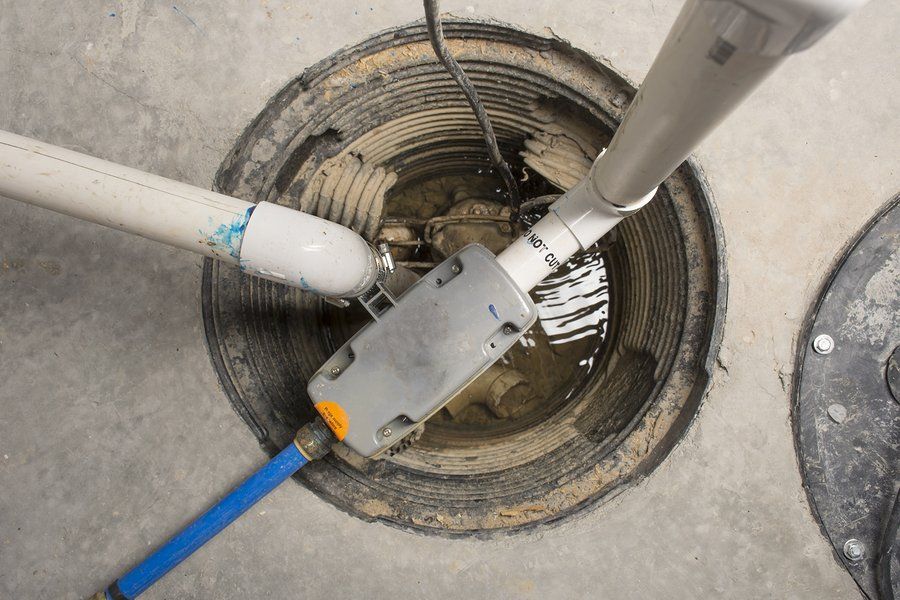
Sump pumps are available in different kinds, all designed for different purposes. The best choice will depend on the conditions in your basement and your personal preferences and budget. There are two different kinds of sump pumps: submersible and pedestal-based. Submersible ones require no motor or backup power, as they simply use the force of gravity to draw water into their sump pit. Pumps of this type are more reliable than pedestal-based sump pumps, as they are less likely to be damaged by high levels of water.
The other main component of sump pumps is the sump pump valves. Valves differ in size, to match the diameter of the hole where the water flows. Different styles of valve also mean that some may be more reliable than others.
Sump pumps play an important role in basement waterproofing. They prevent flooding by removing water from your basement, and this prevents mold and mildew from growing in damp conditions. A dry basement is much less likely to attract microbial growth, which can be a hazard for your family. Some basement waterproofing companies recommend a combination of sump pump installation and regular cleaning of the area, in order to keep your basement free of mold and mildew. Professional waterproofing services can also give you advice on a regular cleaning schedule.
Most sump pumps are made to run in countries with extreme weather conditions. To make sure that it works effectively, you need to check its pressure gauge and make sure it's in good condition. You may also want to check its discharge pipe and make sure it's not leaking. If necessary, you should also check its connections to other pipes in your basement. If you find that some of them are not working correctly, you should consider getting an expert to check them for you. An expert can save you time and money because they know better than you what's wrong with them.
If your sump pumps stop working for some reason, you should have it checked immediately. One common reason is because of an overflowing water supply. This can be solved by having a larger water tank or installing a sump pump overflow prevention system. Other reasons include the draining of the sewage pipes causing flooding. In this case, you should have the flooded basement repaired as soon as possible. This will prevent further damage.
When your sump pumps stop functioning, you may have a new sump pump installed. A sump pump helps prevent flooding by keeping the water level at the lowest point possible and eliminating the potential damage to your basement walls and floors. To install one, you should first locate where your sump pump would be. It's important that you find out the location of your sump pump so that you can make sure that you're putting it where it's needed. You should then locate a level spot on the ground where you want your sump pump to be, and mark it.
Once you find the spot that you want your motor to be, you'll then need to remove the existing motor. You should remove the motor from the pipe that it's connected to. This pipe is known as the pipe nipple. Remove the nipple and pipe until you can safely unscrew it from the motor. This is best done with the help of a bucket or wire brush.

Work done on the exterior of your house is what usually comes to mind when people think of basement waterproofing porches. To someone who hasn't even done or watched very much basement waterproofing work, it probably makes sense, but in all actuality, there are a few benefits that you may not have thought about. Exterior waterproofing your porches can be just as important and beneficial as waterproofing for the interior of your home.
There are actually two main benefits that you can derive from waterproofing your basement on the exterior. The first is called soil stabilization. This basically means that when your waterproofing your porches on the inside of your home, you are in effect doing the same thing that you would do for the foundation of your home's walls. This will prevent seepage of rainwater. If water gets trapped in the porous soil of your basement walls and floor, it can cause dampness problems, cracking of the floor, and other basement waterproofing problems that end up costing you more in the long run than if you had simply waterproofed on the exterior of your house.
The other major benefit of waterproofing your porches on the exterior is the elimination of basement waterproofing drains. Waterproofing drains allows excess water to escape so that it doesn't sit in your house any longer than absolutely necessary. The water that seeps into your house ends up causing mold and mildew in the long run. Eliminating these two major basement waterproofing problems can save you thousands of dollars and a lot of headaches.
One major benefit of basement waterproofing membranes is that they are extremely effective at keeping out any water damage. The problem with older methods of waterproofing is that they were not very effective at all. Basement waterproofing membranes were developed by professionals in this field, so you can be sure that they know what they are doing. They get price cuts from major manufacturers every year because they are more effective than their less expensive counterparts, which makes the product even more affordable.
In older methods of basement waterproofing, the only way to stop water seepage was to build in concrete drains. The problem with these is that they create an un-natural waterproof. They also encourage soil expansion and wall cracking, both of which encourage water to seep through your exterior walls.
Exterior wall cracking happens because water can't drain away from the exterior walls of your house without creating internal voids. This void is created by the permeability of the concrete wall sealant. Basement waterproofing products such as basement waterproofing membrane blocks seal the pores on the interior face of the concrete, thereby allowing the water to run freely, along the surface of the wall. These products also help prevent soil expansion from happening, because the extra layer of concrete creates a stronger seal.
Basement waterproofing systems such as basement waterproofing paints are an excellent option for any home. Basement waterproofing paints are applied to the exterior face of your foundation wall and around the exterior walls using a paint roller. Once you've painted your foundation wall, it will need to be waterproofed once again, and exterior wall coating products like elastomeric coating need to be applied over the painting.
If your home has an older, concrete-poured foundation wall, then exterior wall coating products like basement waterproofing paints may be a good option for you. This exterior coating will protect the exterior of your foundation wall from water damage. Basement waterproofing systems are important in protecting your basement against water seepage through leaks, cracks, and porous materials like concrete and stone, but if you're only dealing with minor seepage problems, a basement waterproofing system may be sufficient. However, if you have moderate to heavy seepage problems, you may need to hire a contractor for more extensive basement waterproofing systems, like the use of basement waterproofing footers, interior excavation waterproofing systems, and other on-site drainage solutions.
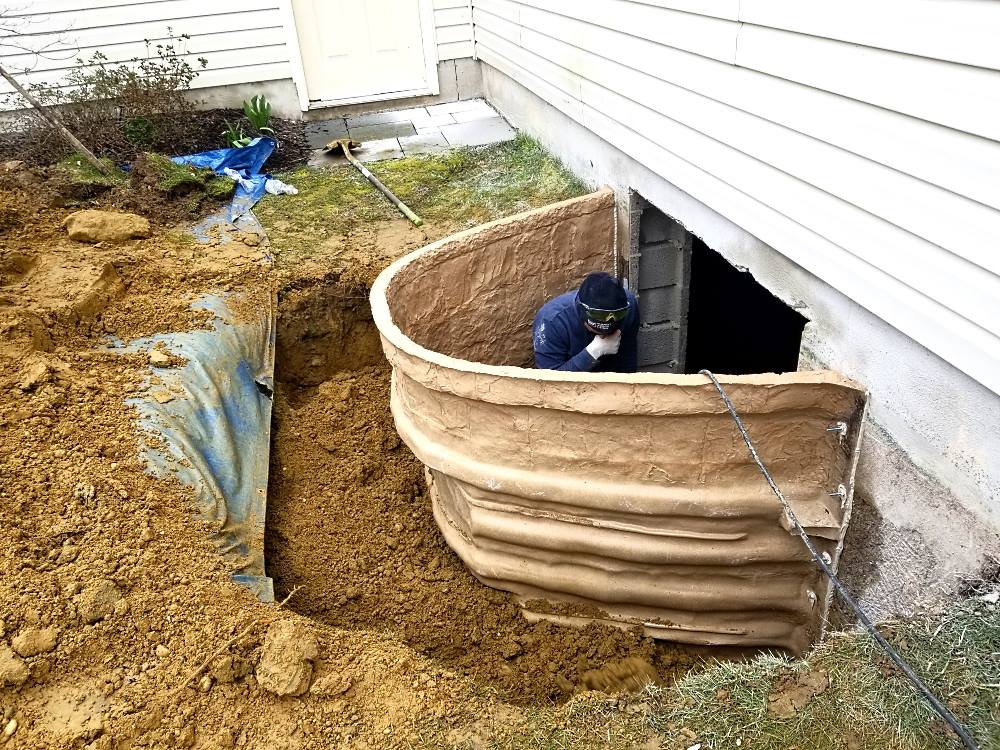
An egress window is essentially an opening that provides an exit in case of a fire evacuation. The exit should be wide enough as set by local laws to offer easy passage to nearby emergency vehicles. For that purpose alone, an egress window is highly beneficial. But an egress window also has the additional advantage of allowing more natural lighting into the room. This creates a cozy feel for you and your family.
The purpose of an egress window or door is to allow light and ventilation into the unfinished basement so that people can evacuate calmly and easily. If there are no windows or doors in the way, there will not be any smoke or heat buildup. It is also possible that no one will know you are exiting the unfinished basement. The fact that there is no one around may be enough of a motivation to help you feel comfortable about going through the basement. Plus, you won't need to be worried about being trapped or left behind.
There are many benefits of having finished basement egress windows and doors. Having one of these devices installed greatly increases the value of your property. A well-built device ensures that someone will never try to sneak through it since the entire area is off-limits. This gives you peace of mind, something that every homeowner would like to have.
The installation process of these devices is fairly simple. Your chosen professional will contact you with their list of manufacturers and installers who make these products. You will be given an estimate for the cost of the equipment and installation. They will inform you of the proper measurements and the height of the window opening. You can also inquire as to whether or not the international residential code for your state requires a minimum opening height requirement. Knowing the code standards for your state will ensure that the egress window fits correctly.
Once the product is ordered, the installer will start installing it. The crew will set up egress openings in all the required areas in your home. This is done according to the building codes laid out by your local building authority. Once this is complete, the workers will cover the openings with sheets of fiberglass. Fiberglass is a good insulator against heat. It will also cut down on sound.
If the egress cover is installed correctly, you should not hear any drilling when the door or window opens. You can test the door or window well in advance of the installation window well drilling. Open the door or window well inside of it. If there is no audible noise, the installation window well was installed correctly.
After the window system has been installed, the installer will carefully cut all the partitions and openings. A standard configuration is six inches of space between each partition. The installer will mark the location of each piece. This will be marked so that the new opening can be added. When installing a new window system, make sure that the location of the pieces is marked exactly so that the new opening can be properly added.
If your basement bedrooms and main floor are wired for natural lighting, this will also need to be considered. Natural light can reduce electrical problems in your home. You may choose to install an artificial lighting system over natural lighting in order to get more natural light to the basement bedrooms. When doing a complete remodel or repair, be sure that all of the areas where windows are needed are included. When doing a complete repair or remodel, make sure that all of the areas where windows are needed are included.
Foundation repair is simply the act of correcting the foundation to make it more aligned to the underlying structure of the earth. To do so, the foundation has to be properly constructed and designed to properly support the overall weight of the structure and to endure the additional loads that may be placed upon it. In a typical structure, the foundation supports the rest of the building which consists of columns, beams, and trusses. Without the foundation, the entire structure would become unstable. The purpose of repairing the foundation is to prevent this from occurring.

There are numerous reasons why foundations fail and the most common of these is when one end of the structure shifts and the other ends do as well. This causes differential foundation movements which, if left unchecked can cause significant damage. When these damages are not tended to in a timely manner, the foundation which is affected loses support and the structure can begin to tilt or move towards the other side of the earth. The consequences of these movements can include the failure of the structure's walls, which, in turn, can cause a disastrous structural collapse. When this occurs, foundation repairs are the only option.
There are numerous methods through which the foundation repair process can be carried out. The best way to deal with the situation is to carry out the repairs at either the beginning or at the end of the structure's life cycle. The most popular method of dealing with these situations involves the installation of one end of a steel beam and tie it to steel support brackets below the surface. Another option is to install steel beams and columns that are positioned directly above the damaged area.
There are many different reasons why foundation problems may occur. Some of these include subsidence, soil pressure, and bowing walls. Once soil pressure is considered, the foundation repair process will involve the excavation of areas that have been affected by soil pressure.
One of the biggest problems that can occur is a foundation repair due to cracks in the steel support system. Small cracks can go unnoticed until they begin to expand. In the worst cases, larger cracks may widen so quickly that the foundation wall becomes completely unstable. Once this happens, the entire structure can collapse.
This may sound alarming, but drywall cracks are not the only reason for foundation repairs. The other types of foundations that require foundation repairs include those that have been compromised through soil pressure, internal foundation movement, and cracks in the steel support system. For example, wet soil can easily expand to a size of seven inches in less than 24 hours. This amount of water can easily leak into the structure causing buckling and structural damage. If the foundation is cracked due to seepage from rain, the resulting effect is usually not a large one but can quickly get out of control when additional water is introduced to the area.
The Foundation movement is another cause of foundation problems. This occurs when the soil under the foundation moves in different directions over time. For example, the soil from a roadbed moves south because of temperature changes and then moves north because of gravitational force. This movement can create gaps and small cracks. If this same soil continues to move in the opposite direction, it can erode the supporting walls and cause similar problems. This is why it's important to regularly check the slope of your soil and make sure there are no gaps or cracks in the foundation.
Finally, soil that expands due to climate conditions is referred to as "enclosed soil". This basically means that the soil has lost most of its volume due to soil pressure and cannot absorb any additional moisture. In order to solve this problem, you will need to fill in the spaces between the expanding soils or build a retaining wall. Foundation repair for these types of foundation problems is similar to repairing wet or drywall cracks. A professional contractor can identify the problem and make suggestions about how to correct it.
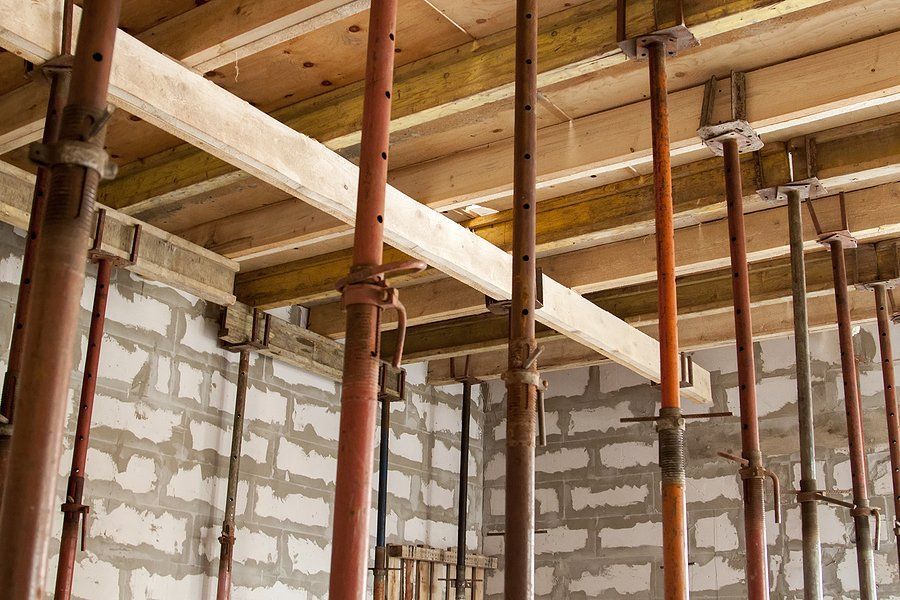
There are many reasons why you might want to learn more about crawl space encapsulation. The first reason is the foul odor that can be associated with such a confined area. If the crawl space temperature is warm, it can also be an inviting haven for pests. Not only will they be able to live in this warm place, but they will also be able to thrive. There are many other reasons why encapsulating the crawl space may be necessary, including:
When it comes to crawling space cleaning, there are many benefits that come with the system. First of all, it is going to help you cut down on structural damage. According to the dictionary, encapsulation is the activity involved in enveloping something as if it were inside a sealed capsule. When it comes to the crawl space, encapsulating the floor and walls will help cut down on structural damage from moisture and water damage. It will also help keep the area cool and insulated.
When you use a proper crawl space encapsulation system, you are also going to cut down on moisture loss. This can be extremely damaging to the structure of the building. If you have a basement, you know just how damaging humidity can be. Even if it is just in the beginning stages, it can create damage to the subfloor. If you don't have a basement, moisture can still get in and cause damage.
With proper cleaning and dry methods, encapsulations will make sure you reduce moisture loss from the crawl space. You can do this by using a professional company to do the job, but you can also do it on your own. In fact, the benefits of DIY cleaning and DIY encapsulating may outweigh the costs of having a professional company do it.
If you use a professional encapsulate, you can have it done at a much more reasonable cost. For one thing, they know where to find mold spores that are likely to be present in the crawl space. They also know how to get rid of them. Also, you won't have to deal with clean-ups, which can get messy with all the debris. You will have a dry, odorless place for the dirt to go when you clean up the crawl space with a DIY method.
You also won't have to worry about mold growth because space is going to be sealed tight. A lot of the time people use the crawl space encapsulation process as a way to help eliminate humidity. The moisture that is removed will be gone and the humidity level will be regulated. You will never have to worry about mold again.
Professional encapsulations will have a lot of experience dealing with dampness issues around drains, sewer lines, under sinks, and basements. They know exactly how to prevent mold and mildew from happening in those areas. It won't matter whether you have a commercial property or a residential property. Professional waterproofing companies will be able to waterproof any crawl space no matter what type of environment it is in.
There are two options for encapsulating a crawl space. One option is a surface sealing system. This method seals the area on top of the foundation walls with a barrier material. The barrier material will either be mineral wool or some other form of the waterproofing membrane. The membrane is installed along the walls and then the dirt extracted and removed, leaving drywall.
Surface encapsulation is done by digging a hole, putting in a foundation wall, sealing it, then installing the perimeter wall and drainage system. Once this process is complete, it is time to install the waterproofing membrane. This membrane will also prevent moisture from getting inside. It will also provide a barrier between the soil and the structure of the foundation wall. If all goes well, encapsulation should last for years.
Unfortunately, some HVAC contractors neglect to make sure the encapsulation process is complete before they begin any cleaning or maintenance. When they see that water is leaking from the walls, they will typically make repairs. The problem with this is that this leaking water will seep into the ducts and other areas of the HVAC system. Instead of cleaning out the water damage and making repairs, they continue with their regular cleaning routines, often delaying repairs until the following day.
Crawl space cleaning and encapsulation are vital, but to keep your heating and cooling costs down, you should perform your annual inspections and clean-up on a timely basis. You can help prevent costly repairs and HVAC problems by scheduling regular inspections and clean-ups for the entire home. There are many things to do around the house to keep the place as clean and hygienic as possible. Start with vacuuming the floor every week, removing and replacing worn carpet, cleaning the windows, chimneys, and skylights. For larger rooms, hire a professional HVAC company for routine cleaning and maintenance.
Cracks can mean many different things. Cracks in concrete may not always mean major structural issues. Cracks can also be minor and may represent just cosmetic damage to a part of the wall. In the United States, about sixty percent of all houses are constructed on soils with at least some clay in them; about forty-five percent of these houses will experience significant foundation damage over the years. Soils with an earth content of more than fifty percent will result in a foundation moving at a seasonal movement of up to forty-five to sixty-five mm, which is about two inches per year.
Contractors use a variety of tools to determine the type and degree of damage to the walls. One tool that can be used is an epoxy injection gun. Epoxies provide a non-flammable seal to prevent moisture from seeping in from the outside. When cracks are found, they are filled using n epoxy. Epoxy is typically available in four colors, red, blue, black, and green, and can also be mixed with concrete to create matching colored cracks and piers for architectural purposes.
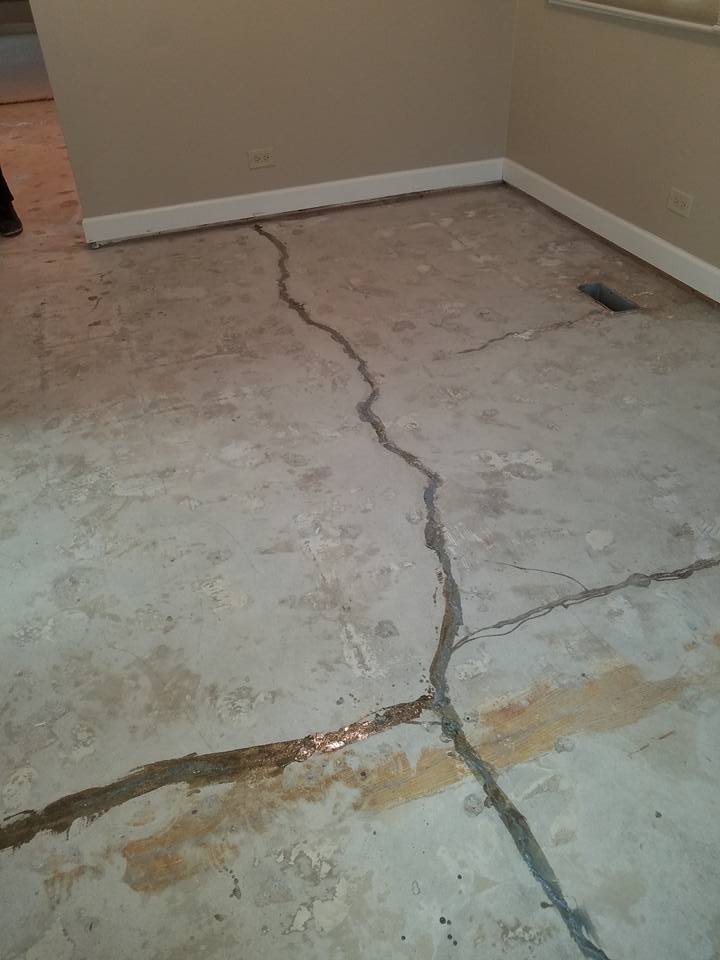
Cracks in the Horizontal Spine:
This is one type of foundation problem that has a wide range of potential solutions. In this case, horizontal cracks often indicate the stress levels in the underlying walls have exceeded their capability and require repair. As the walls age, they become less capable of coping with the weight of soil, debris, and water. The cracks may become horizontal because of the strain, resulting in buckling. As the soil pressure increases, the vertical stresses on the walls also increase, resulting in buckling. Cracks that are located close to the soil surface or foundation wall may be repaired with epoxy, if your in the local area you can always contact Nottingham Groundworks
Cracks in the Vertical Wall:
A foundation wall can crack vertically because of stress loads and/or structural changes due to ground movements. As a result, the stresses can move through the structure creating cracks. Most cracks will start near the bottom, but some can start at any angle. In some cases, cracks can penetrate the surface, creating a situation where the vertical crack travels through the whole length of the wall. These cracks should be repaired immediately, as they can worsen and compromise the stability of your foundation. Epoxy can be used to fill these cracks and create a smooth, impervious surface.
Other Causes of Cracks in Foundations:
Another common cause of foundation cracking is soil pressure. This can occur with changes in soil elevation or with rain. Groundwater levels can fluctuate significantly from year to year and can increase when storms occur. Rain is also a root cause of cracks that run through the structure.
If the cracks are not repaired, they can weaken the supporting structures, which could lead to more serious structural issues. Foundation crack repairs should be performed as soon as possible to avoid further damage. This is a very important step to take in repairing your home's foundation.
Settlement:
Any cracks or other damages in the walls need to be addressed quickly. Water and settlement can lead to more serious damage over time if not repaired. In addition to water, settlement can be caused by the settling of the earth underneath your home as well as the settling of the earth on the surface of the foundation itself.
When you identify cracks or other issues in your home's floor, walls, or ceilings, contact a local foundation repair professional to discuss what steps you should take to repair the damage. Cracks can often become worse over time without proper repair, so it is important to address them right away. With an expertly-performed foundation repair job, you can rest easy knowing you've taken the appropriate steps to prevent further damage from occurring.

Roof Waterproofing is basically the procedure of protecting an object from water or damping it so it remains relatively unaltered by water or withstands the penetration of water at specified temperatures. These objects could be used either in wet or dry environments or even underwater to certain depths. The material used to carry out this procedure is referred to as the waterproofing substance.
Polymer is a common ingredient in many types of waterproofing systems, including Liquid Zeolite and Teflon-coated asphalt. A water-repelling polymer like polyurethane is also a popular option. Commonly, these substances are known as plasters and are applied on concrete, slate, brick, stone, and many other surfaces with the aim of creating a protective seal against water penetration.
Roof Waterproofing membranes are a popular method of waterproofing many households. The construction of a liquid membrane involves forming a thin film of a waterproofing agent onto a roofing membrane or wooden panel. This is then embedded into the plaster of the building so that the protective layer is carried over to the interior of the building where it forms a waterproof seal that can withstand the effects of moisture on a regular basis.
Another type of waterproofing product that can be used successfully in a residential environment is a membrane of cement. This is made out of cement, sand, and water-resistant resins. In many cases, these mixtures can be combined with other ingredients to create stronger compounds that are more effective. This is done because some cementing compounds can break down into simple salt structures that can be used as a detergent for washing vehicles in coastal areas, as well as stopping the growth of bacteria on plants.
There are also many types of sealants available for a variety of purposes. Two of the most commonly seen waterproofing materials in the UK are rubberized asphalt and polystyrene. Rubberized asphalt is the most commonly used material on roadsides and grass areas, but it is also used on pools, hot tubs, and even some toilets. Polystyrene is often used for landscaping and even insulating buildings. It is also capable of keeping out the rain for a number of years when it is properly maintained.
Another type of waterproofing product is cem-kote products. These are basically rubber mats that are applied to a roof. They are known for their ability to withstand snow loads and strong winds, which is why they are primarily used on roofs of commercial buildings. The cem kote can also be used to protect a pool from damage. They do this by creating a physical barrier that prevents moisture from seeping into the pool and destroying the structure.
The third type of waterproofing product is crystalline admixtures. These are also known as granular waterproofing systems. These admixtures consist of various types of waterproofing agents that are applied to a roof. These agents bind with the surface tension of the crystalline and form a solid barrier against water entry. They are commonly used to stop leaks at storm drains and to prevent ice dams in ice-prone areas.
Waterproofing systems come in many forms. There are numerous types of sealants that can be used to stop water seepage. These include asphalt sealants, rubberized asphalt sealants, and polystyrene waterproofing systems. These systems can be applied to the exterior surfaces of any building or home. This makes them suitable for a wide range of climates and weather conditions. They can also be used to prevent mold from forming on the exterior surfaces of houses.
There are also several ways to prevent water seepage through cement. These coatings have a major role in preventing dampness and water penetration on exterior walls. There are two common types of such coatings: exterior wall coating and interior wall coating. Interior wall coatings are often applied to homes to strengthen their structural integrity.
One of the most effective methods for waterproofing is the bituminous coating waterproofing method. It is often combined with other techniques such as concrete and masonry sealants to increase the efficiency of these efforts. A bituminous coating is composed of a hard, non-breakable resin compound that acts as a protective layer. It is applied over an asphalt base and over both concrete and masonry walls.
Asphalt-based sealants do not provide as much resistance as the bituminous coating and their use can actually reduce the aesthetic value of the home. However, asphalt coatings are highly resistant to fire and termite attacks, are long-lasting and require little maintenance. There are two basic types of bituminous coatings. These are either acrylic or polyurethane sprayers with an asphalt base.
Deck and Porch Waterproofing refers to the process of preventing the entry of moisture or liquid into an object or structure, usually by sealing the pores or surfaces of the material. These objects can be used for dry or wet environments, in both indoors and outdoors, to specified depths or wet areas. It is done with the help of a number of techniques that involve sealing, sprinkling, vapor locking, or draining. Waterproofing must be done with the approval of the local government, as different countries have different standards and regulations.

This ensures that the material is suited to its environment and does not let the water harm the people or damage the structures. A properly installed and maintained water proofing system not only extends the life of the structure, but also protects the people who live or work in it.
Deck and Porch Waterproofing prevents excessive rain or melting snow from entering your Porch. This prevents the accumulation of slush during the winter and keeps it safe during summer. When a structure is subjected to constant exposure to moisture, a bonding agent called bituminous coating is applied on the exterior walls of the building and the foundation walls.
There are two methods of waterproofing systems. The first one is using a water proofing agent that is applied on the surface of the concrete or stone through a membrane or a special application. These systems are effective but slow to install and requires continuous maintenance. The other method of waterproofing is known as vapor barrier or vapor control. This system uses a plastic membrane that is applied to the exterior surface of the structure, thus preventing the entry of moisture. These systems are fast and easy to install, but are costly.
There are certain advantages associated with both the above mentioned systems that we need to discuss. In case of a flood, the waterproofing will prevent heavy water extraction and damage. In case of a fire, the waterproofing will stop the spread of fire. And in case of a leaky foundation, the waterproofing system will stop the foundation settling and thus prevent hydrostatic pressure from building up.
There are many types of waterproofing products available today, each with its own merits. For instance, if you live in an area where rains regularly come, you can use a water resistant cement sealant for your walls and floors. It will not only provide protection from heavy rains, it will also add strength to your foundation. However, a regular application of cement waterproofing products is necessary to keep your home or office dry. Waterproofing your deck is very important, especially if you live in a coastal area that regularly experiences strong winds.
When it comes to the question of how you can stop the spread of mold and mildew in your home, there are waterproofing products like vapor barriers that you can use. They are made of special materials and are designed to stop the moisture from the atmosphere before it has the chance to enter the structure of your home. Waterproofing by using vapor barriers is actually quite cheap, as well as very effective. Another type of effective vapor barrier, that works to stop moisture in its tracks, is cellulose vapor barriers. And finally, there are many different types of mold and mildew vapor barriers, but most of them have the same principle - they are meant to prevent moisture before it has the chance to move to other places inside your home.
One of the most efficient waterproofing materials used nowadays is rubberized asphalt. This material, which is often used for roads, buildings, and other such places, is able to resist the high water flows that usually occur during many types of storms. And rubberized asphalt is very useful for many types of applications, as it has the capability to stand up against oil and grease leaks, as well as to withstand a lot of wear and tear. Rubberized asphalt is also resistant to the growth of mold and mildew, so it is perfect for protecting your home from these potentially harmful organisms.
Aside from being used on structures, there are also many purposes for a membrane around the home. Membranes are often used in basements and on decks, especially since they are quite cheap and do not require a lot of maintenance. A membrane is also perfect for preventing the spread of mold and mildew, so you are sure that your home will stay as clean as it should be. Also, if you want to waterproof your swimming pools, you can easily install a membrane there, as well. You should note, though, that a membrane is not really a waterproofing material; it merely acts as one.
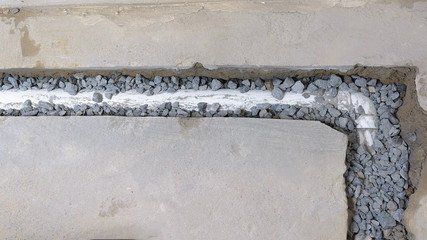
If your basement walls are getting water stains, leaking windows or you have someplace like a water heater or washing machine clog, then it's time to learn how to install French drains properly. A French drain is an ideal type of plumbing system designed to channel water away from residential buildings and even low-lying regions. These large rock-filled pipes are constructed with a perforated drain pipe and directed water down a slope so as to keep it out of your basement, particularly the basement. It is designed to be installed quickly and easily by qualified plumbing professionals.
A typical setup for French drains involves a series of pipe sections connected together with flexible joints. This setup makes installation quick and easy as well as less expensive than having to dig up your yard and set up a series of drain pipes. Since the entire pipe runs horizontally, it is easy for workers to install French drains over existing soil. If the soil needs to be removed, then professionals can also do this without too much difficulty. Another benefit of installing French drains is that the new system does not pose any type of risk to your home or your health.
When it comes to the issue of basement leaks and cracks, most homeowners panic because they don't know what to do. The first thing that you should do when French drains are installed is to consult with a professional contractor who has experience in French drain repair. Some contractors might charge you a consultation fee, while others will work on a per-pipe price. There are different ways to obtain quotes for French drain repair, including contacting a local plumbing company or checking online. If you are not comfortable with French drain repair, then it might be best to hire a local contractor who has experience in installing these drains.
As soon as you notice water leaking from your basement, call a contractor who can help with French drain repair. First, excavate around your house using a pickax to break up the concrete and soil around the foundation. Then, remove the dirt and soil from around the foundation as well as the foundation and floor of the basement. Set aside at least two feet of solid, level ground. A ten-foot section of the basement will be required for French drain repair; this is the area where the retaining wall will be installed. A ten-foot section of concrete will be sufficient enough to hold the weight of a truck.
Once the area has been excavated, the hole will be wide enough for a vehicle to drive through. An excavator will be used to break up the concrete. Contractors will then need to remove the soil and clean out the broken areas using a vacuum. Using a brush, the debris will need to be moved to a safe location where it can be disposed of correctly. After the soil is cleaned up, contractors will need to install the retaining wall and French drain repair services will begin.
Some French drain installation companies offer their own equipment, while most others rent their machinery and equipment. This will depend on the contractor. The best way to get estimates is to make an appointment with several contractors. In order to find the best contractor, property owners should research online. It is important to note that a lot of contractors will say they do not specialize in French drains until they have completed work on hundreds of similar projects. This is because many property owners expect perfect results when only their dream house was completed; however, without checking the contractor's portfolio or references, the best way to know if the contractor is right for the job is by calling his or her references.
There are many reasons why French drains become clogged with sediment. Most of these reasons are soil-borne diseases, such as giardia, salmonella, e-coli, and staphylococcus aureus. These pathogens are parasites that live and breed in sump pits and crawl spaces. A French drain repair is needed when this environment becomes moist due to tree roots, water damage, heavy rainfall, excessive use of water, construction materials, or any other reason. The main problem is that most homeowners do not know how to properly maintain their drainage systems and have no idea how to make sure that French drains are installed properly and sealed to prevent any potential adverse effects to the surrounding soil.
There is no need to put up with French drains any longer. By hiring a qualified contractor who specializes in French drain repairs, you can save time and money and prevent the future problems that come with ineffective maintenance. Remember to call a certified licensed contractor if there is any question about your French drain repair needs. With the help of a professional, you can feel secure that your French drains will function as designed and will not contribute to unwanted water damage.
Radon can be very dangerous. Radon has been associated with several different types of cancer, including lung cancer. Radon is an important contributor to environmental radium concentration. A Radon Reduction System can effectively reduce radon concentration in your home or office.
Radon enters your home through cracks in the foundation and floor slab, as well as through the air. Radon gas is emitted into the living spaces when the Radon gas exchanges with the air at the soil level. If you install a Radon Reduction System, the Radon will be stored in a sealed system that keeps it contained. Once you install a Radon Reduction System in your home, Radon test results are done twice a year. Once your Radon test results are in the testing laboratories, your mitigation system is tested on a regular basis.
High levels of Radon are associated with lung cancer. It is estimated that over one million people in the United States suffer from the effects of Radon gas. In addition, thousands of other people in the United States do not know they have high levels of Radon in their living spaces. Radon gas is odorless, colorless, and tasteless. However, when Radon meets with lung cancer cells, it produces a high degree of toxicity.
There are three Radon measurement methods in use to measure radon concentration in your home or office. The Radon Spraying Test is one of the more commonly used Radon measurement methods. This test measures radon concentrations in indoor air by analyzing the amount of Radon gas emitted during the test. The Radon test results are read out and displayed in ranges, giving an indication of what the specific Radon concentration level is.
The second method is the Radon Testing/Detection Kit. This kit is used in homes where there is evidence of Radon present. During a Radon test, the Radon gases will be analyzed and then the specific Radon concentration level will be determined. The Radon testing/detection kit can be used for short-term mitigation and long-term mitigation. The follow-up test allows the homeowner to monitor the radon levels in their homes over time to ensure they are in compliance with local residential density requirements.
The third method is the Radon Reduction System. This is also a portable device used in homes to test for Radon levels. Again, Radon test kits is used to determine the specific Radon concentration level to which a home is exposed. Long-term monitoring is done using this same kit, as well as with the Radon Reduction System.
In the northern part of the United States, the areas most commonly exposed to Radon include the bottom floor of homes, crawl spaces, and basements. In humid climates, the presence of Radon is more likely. Humid climates also tend to heat up faster, which increases the rate at which Radon enters a home. Heat recovery ventilators are often recommended for homes with high radon content. Heat recovery ventilators draw the air away from the home and warm it, before releasing it into the atmosphere. This method reduces the amount of heat lost through the HVAC system and improves the performance of the furnace.
There are several additional methods of Radon mitigation. Radon abatement can be achieved by mechanical ventilation of the home. Active soil depressurization is effective in reducing the Radon present in the soil. Homeowners can choose from several different methods of Radon abatement, including the Radon Reduction System. This system combines passive soil depressurization with active soil purification to trap Radon in the soil.
Radon mitigation can also be achieved by placing radon mitigation equipment in residential areas. Several different types of mitigation equipment are available, including Radon detectors, Radon monitoring instruments, Radon exhaust fans, and Radon evacuators. Radon monitors are designed to measure Radon levels in residential areas and alert the homeowner when it is activated. Radon emission alarms, which are also available, sound an audible alarm when Radon levels become too high.
Sub-slab depressurization is another method of Radon mitigation. The most popular sub-slab-depressurization method in the United States is known as passive sub-slab-depressurization. This method uses a specially-designed system that pumps Radon diluting chemicals into the basement. Sub-slab depressurization is less expensive and much less harmful to homes than Radon abatement.
Radon is a silent, odorless, colorless, but harmful gas that is often undetectable or harmless to people when present at low levels. However, prolonged Radon exposure can increase a person's lifetime risks of certain cancers, chronic bronchitis, and emphysema. Radon is a very tangible threat to the health of the inhabitants of the United States. Radon gas can enter homes via the cracks and crevices of basement walls, floors, ceilings, and appliance, and plumbing fixtures.
Black mold or Stachybotrys chartarum, also referred to as toxic black mold, is a type of fungus that produces its spores in tiny slime coats. It can be found in almost any soil and food supply, although the most common mold found in homes is black mold in damp or moist areas. Mold growth can cause health problems including allergies, rashes, asthma, and severe breathing problems for individuals who are highly sensitive to it.
There are a few methods to black mold removal, depending on the severity of the situation. If a leak or flooding is responsible for the dampness, a pump and solution can help to quickly dry out the area. For milder situations, simple household cleaners may work. If you suspect that your leak or flooding is due to black mold spores growing in moisture, a professional cleaning service should be able to advise you on the best way to remove black mold.
Toxic mold symptoms include itchy eyes, nose, throat, and headaches. Mold allergy can range from mild to serious. Some people have an initial reaction of nausea, wheezing, and nasal congestion. Other individuals have itchy, watery eyes, skin rashes, and breathing difficulties.
Mild cases can often be treated with antifungal ointments, lotions, and sprays. Individuals suffering from mold allergy can also take oral antihistamines to rid their bodies of excess histamine. Severe exposure can result in serious health concerns including lung infection, chronic coughing, seizures, and brain abscesses.
It is important to note that mold exposure and the symptoms experienced are very serious. In fact, mold can lead to serious life-threatening conditions such as pulmonary embolism, allergic asthma, and chronic bronchitis. Some people experience shortness of breath, shortness of eyelids, and permanent damage to the lining of the lungs. Even more alarming is the fact that mold can actually be a cause of death. It has been known to kill as many as 50% of its human hosts through toxic reactions.
The only way to be sure that mold won't grow in your home is to make sure that it never develops in the first place. Mold needs moisture, so the most common places that it likes to grow are attics, crawlspaces, basements, and the outside of houses. One of the reasons that this type of fungus grows so quickly and easily is because it doesn't need much food or moisture to survive. Often, if you don't notice black mold until it's too late, you'll have a lot of living space for the fungus to feed on.
It is easy to keep mold from growing in your home through routine maintenance and clean-up. Make sure that your house is frequently cleaned with a good air cleaner. For areas where there is a great deal of moisture, like the bathrooms and basement, you may need to use a dehumidifier in order to keep the moisture levels in these rooms at a more reasonable level. If you live in an area where there are high levels of humidity, you may want to consider purchasing a humidifier or some sort of portable water treatment device.
Black mold and other types of fungus can cause health problems in several ways, including respiratory infections, allergies, brain chemistry changes, and structural damage to the building itself. If you see any indications of black mold in your home, get rid of it as soon as possible.
Don't wait for it to spread and damage the building further. There are several ways to test the level of moisture in your home without using specialized mold testing kits. The most common way is by checking the windows and doors for leaks and airflow. You can also check the walls and ceiling for signs of dampness. If you smell mold, you can check the carpet and other surfaces that could hold moisture. Remember, though, that even if there are only one or two small mold spots in your house, you still need to do something to remove the toxic black mold.
Once you've located the source of leaks or other mold growth, you can take steps to remediate it. One common method is to run a water extraction system. In this process, you would pump out the affected area and pump back in freshwater. This will help to kill any remaining mold spores. Afterward, you can use a cleaning agent to help you get rid of any remaining remnants of the toxic black mold.
While this solution can work well on smaller mold infestations, it won't be able to handle larger infestations or continuous exposure to water or moisture. For these situations, you may need to hire a mold remediation company. These companies utilize technology to completely clean up large mold patches. They also have the resources and expertise to help you repair any leaks or damaged areas. Because they handle all kinds of mold exposure cases, they also have the ability to offer advice on how to prevent future mold growth. By working with them, you can avoid dangerous exposure to toxic mold spores and protect your health.
Contact Us For More Information
Are you in need of a trustworthy foundation repair team to help you with your home repair issues? Then pick up the phone and get in touch with us now so we can help you right away. The team at Levittown Foundation Repair Pros is the best when it comes to Foundation Repair. All of our contractors are experienced and highly skilled, which make them qualified to help you fix any problem big or small. Our friendly customer support team will be willing to talk you through some of our services as well as provide you with the best options for the best service.

“I give Levittown Foundation Repair Pros a huge thumbs up and 5 star rating for quality service” – Jane, M.

“My wife and I decided to get our walls repaired because it had too many cracks. We scouted around for a few foundation repair companies and came across Levittown Foundation Repair Pros. We were surprised because they did an amazing job. We will definitely recommend them to our friends! .” – Jason, R.

“Levittown Foundation Repair Pros is the best team for foundation repair that I have had the pleasure to work with. They get things done on time, and the prices are affordable.” – Christian, S.

